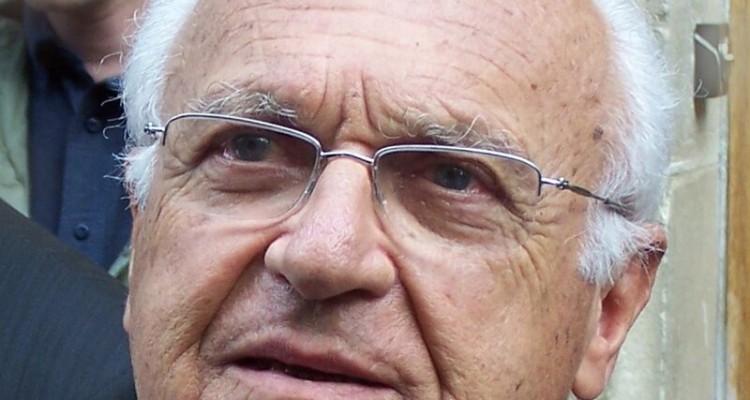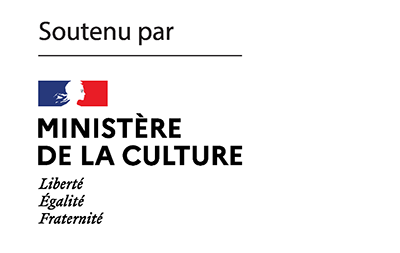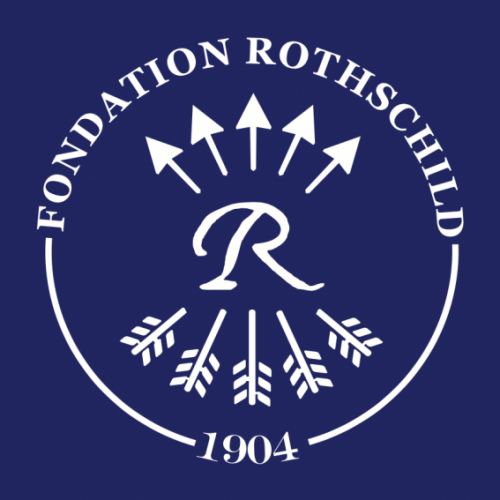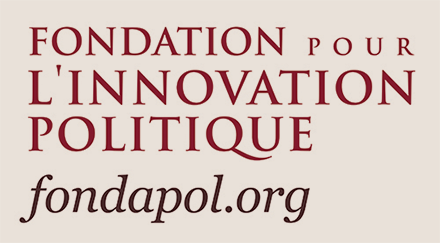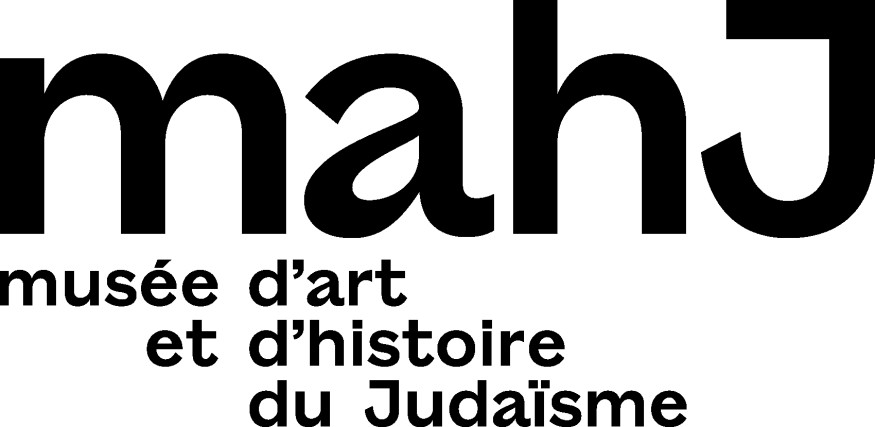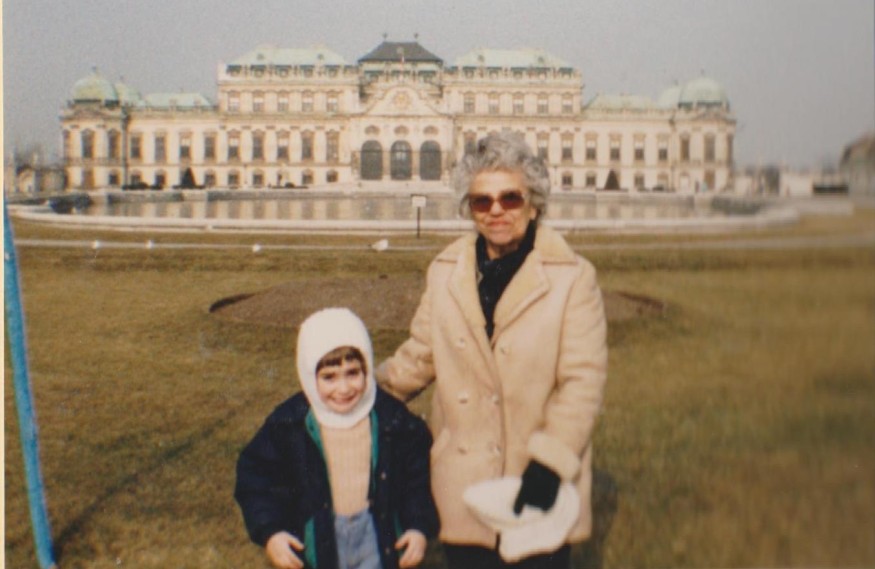
I arrived in France when I was only one year old and waited 37 years to become French. I knew nothing about my homeland Germany, my Germanness was virtual, reduced to a language and a passport. The fear of breaking the umbilical cord with the history of my parents, those “last German Jews”, paralysed me in the process of becoming French. I had to have children, to hear them answer me in German, to see our Jewish-German identity being preserved before my eyes, before I could do what was self-evident and what I had been putting off for so long.
The procedure was expeditious and I received my French birth certificate (as in Judaism, the neo-Frenchman is a newborn) only six months after I started my naturalization process. Three days later, the dual citizen I had just become was again seized with identity-related restlessness and I contacted the Austrian embassy in Paris. Since 2019, Austria, like Germany, allows the descendants of victims of Nazism to recover the nationality of which their ancestor was deprived. This is my case. Symbolically, the candidate does not become Austrian, but merely recovers a nationality that should never have been taken away, as if, in an uchronistic way, he or she had never actually stopped possessing it. This legislation leads to an ironic reversal of history: the very same Jews that Europe wanted to suppress find themselves the ones who can today accumulate the greatest number of European nationalities, precisely in the name of this crime.
I already had two nationalities, German and French, but something compelling pushed me to get a third one. A pendulum swing dictated that I compensate for my French naturalisation by obtaining a new ‘foreign’ nationality. To complete my identity equation, I had to add an ‘elsewhere’ to the ‘here’ in which I had just become administratively anchored. Becoming officially French meant that I now fully accepted to belong to the country I was living in, to become one with it and to potentially get stuck in it, and this prospect sparked an inner insurrection in me from afar – more precisely from Vienna where my maternal grandmother was born and where she died.
Her name was Alice in the registry office, but everyone called her Litzy. Born Kolmann, she first married a man named Friedmann, who we only know was a Zionist. The English aristocrat Kim Philby, whom she had converted to communism and who later became the world-famous double agent, was her second husband[1]. And finally, there was my grandfather, Georg Honigmann, whom she also eventually divorced.

I reduced this succession of names, this conjugal and social palimpsest, which translated her fragmentation, her dispersed identity, to the single “Oma” (the German “granny”) and made my head spin.
Her grave, located in the Jewish cemetery in Vienna, is extremely bare. It reads only her last name, Honigmann, her dates of birth and death (1910-1991) and the traditional Hebrew formula that wishes the soul of the deceased to be linked to the assembly of the living, which my approach to the Austrian embassy gave flesh – or at least paper.
I only knew my grandmother for the first eight years of my life. When my parents moved from East Berlin to Strasbourg in 1984, she left the GDR, where she had settled after her exile in London during the war, to return to her homeland of Vienna, within easy reach of her only daughter, her son-in-law and her two grandchildren. She, who had never had any other family than the Party, nor any other motor than “the cause”, was thus liquidating 60 years of communist commitment in 48 hours so that we could continue to live in the same world, in the West. We visited each other five to six times a year. The Mozart train, which then linked Paris to Vienna via Strasbourg, took us to Vienna in eight hours.
The trips to Vienna were a decisive piece in my inner psychological puzzle. I pictured Austria as Germany without Nazism and Vienna as Berlin without the Wall. The missing link that could triangulate the squared circle of German-Jewish identity and its gaping tear. One could therefore legitimately be Jewish and German-speaking, it was called Austria.
A few flashes crystallize the memories I have of my stays at Oma Litzy’s. First of all, as for everyone, there is the memory of food and taste: Mozartkugeln, marzipan balls coated with chocolate and Manner Schnitten, a kind of waffle called “Neapolitan” which reminds one of the southern nature of Austria where Italy is never far away.
There is also the auditory memory of the German ch that my grandmother pronounced ‘h’. For Kirche (church) she would say Kir’he and she called our Shabbat barchess (the braided bread that 99% of Jews today call ‘halot) bar’hess.
Most of all, I had an obsession on these routine trips: I always insisted that my parents accompany me to the Army Museum, the Heeresmuseum. I have no idea how the unmentionable part of the Austrian army’s history, its incorporation into the Wehrmacht, was displayed there – or even mentioned. But I remember my attraction to the place. I think it expressed the paradoxical comfort of being in a place that was certainly reminiscent of war, but framed by rules, and respecting a minimum of symmetry between belligerents. The opposite, therefore, of the massacre of a crowd of innocent people who posed no threat to anyone by hordes of soldiers. Placing war in a museum also meant relegating it to the past, as an outdated object. At the time of these trips the war was still cold (Vienna was the hub of the US-Soviet negotiations), in this museum it became a fossil.
I did not know, of course, that Hitler, like Eichmann and so many other great Nazis, was Austrian, that the Anschluss was welcomed with popular enthusiasm bordering on collective ecstasy by the overwhelming majority of the population, and that the Jews were mistreated, humiliated, denounced and murdered by their neighbours, colleagues and friends in the same way as in Germany. Nor did I know that these same Austrians had managed the exceptional feat, after the war, of passing themselves off as a victim country, thus quietly exonerating themselves from the much-praised work of repentance of their German neighbour.
Nor did I know how deeply, how consubstantially antisemitism could be rooted among Austrians. The concept of the Jew as an eternally unassimilable meta-human being is best expressed in a documentary entitled Watermarks (2004), which focuses on the female swimming champions of the Hakoa’h Vienna sports club, which was founded in 1909 as a reaction to the systematic rejection of Jewish athletes from ‘Aryan’ sports clubs. Hakoa’h swimmers dominated national competitions, much to the dismay of the Nazis who closed the club during the Anschluss. The champions were able to flee to the United States and director Yaron Zilbermann follows their moving reunion trip to Vienna 65 years later. In the taxi that picks up one of the former swimmers at the airport, a breathtaking scene occurs in the film: the driver blandly asks her why she left the country in 1938. She replies that she was considered a sub-citizen and he replies – without any malice – that she was not really Austrian. Stunned, the woman who had just set foot “at home” after a life in exile replied that this was the Nazi conception and that her family had lived there for 500 years. And the driver added: “Yes, but still, you weren’t really from here”. A continuity of Nazi thinking, “Blut und boden[2]” was expressed with good-naturedness and without the slightest bad conscience, leaving the exile on the way back in hysterics and the spectator seized with a feeling of powerlessness and absolute despair.
As an adult, however, I found it curious that in France Austria was even more detested than Germany. As if the little hands, the opportunists of the licence to massacre, the second-class Nazis were worse than the designers of the crime. A disturbance in the hierarchy of hatred that I find myself feeling towards the Romanian, Lithuanian or Ukrainian “auxiliaries” that we see in the rare photographs of the open-air massacres of the Einsatzgruppen.
Should we see this as a mental trick that allows us to keep the crime at bay, by throwing our desire for revenge and resentment onto the second knives rather than the masterminds?

At my grandmother’s house we also found her circle of close friends, Jewish middle-class people who were like family to us. I thought of them as great-uncles and aunts, they were called Löw-Baer, Spitz or Smolka, they showered my brother and me with gifts, had housekeepers and spoke that special German that is so melodious to my ears, Viennese. Of course, they were all Jewish, and for them, as for my grandmother, it was as much a matter of course not to practise any rule of Judaism as to associate only with Jews. They celebrated Christmas and ate pork while we did Shabbat and ate kosher, but the gulf between their atheism and our rather orthodox way of life was so wide that it could not even give rise to friction. Assimilation and then communism and Auschwitz had made religion irrelevant. They lived neither with nor against God, just without God. Being Jewish was a fact, as obvious as it was delicate, hanging on an invisible thread but thick enough for my parents to grasp it and flesh it out in their own way.
To me, they were Jewish by the simple fact that they spoke German, THE decisive criteria of Jewishness in my eyes as a child. So much so that at the Strasbourg synagogue we attended, as part of the Students’ Yechiva, I sometimes asked my father if the master of the place, Rav Eliahu Abitbol, was really Jewish, given that he did not speak German. Through a diversion in the history of post-war Judaism, it turned out that this native of Marrakech had learned his Talmud in Yiddish from the greatest teachers in Israel. He was therefore able to tell me, in his Yiddish with a Moroccan accent, that he too spoke German. That reassured me!
My Viennese grandmother, on the other hand, did not speak a word of Yiddish, except for one expression: “goyim nachess“, literally “goyish amusements” – i.e. sports, drinking or gambling – an expression she sometimes used to draw a line of demarcation between “them” and “us”, which meant between civilised people (the Jews) and savages.
My grandmother was so non-religious that I had to wait until her funeral to realise that she was “Jewish like us”, that is, “before God”. At the time I even found it absurd that a rabbi should say prayers in the cemetery. This oddity was reflected in my mind by a semantic confusion during the religious ceremony that followed in the synagogue: the rabbi of Vienna (Wien) said a prayer over wine (Wein), which my father encouraged me to taste, but I mistakenly understood that he wanted me to cry (Weinen), which I found over the top and completely out of step with the spirit of Viennese distinction that characterised my grandmother.
I later understood what my slip of the tongue revealed: if I heard an injunction to cry, it was because my grandmother’s death marked an irreversible break with the German-speaking world. The mourning that had to be done was now about that ‘vital mental space’ that Austria constituted, the third term of the identity triangle and the foundation stone on which my psychic scaffolding rested.
From my grandmother’s Viennese, there is only one word left that I use every day, together with my French Jewish wife of Alsatian-Tunisian origin and my German-speaking Parisian Jewish children. In our flat there is a room we call the Krawuri (pronounced kravouri). An onomatopoeia which in Austria means bazaar, joyful disorder, which Hebrew has borrowed from Russian with its balagan. In short, at home it’s the catch-all room where you put away things you don’t know where to put them.
The Krawuri, this room without identity but which allows the others to be habitable.
Ruben Honigmann


